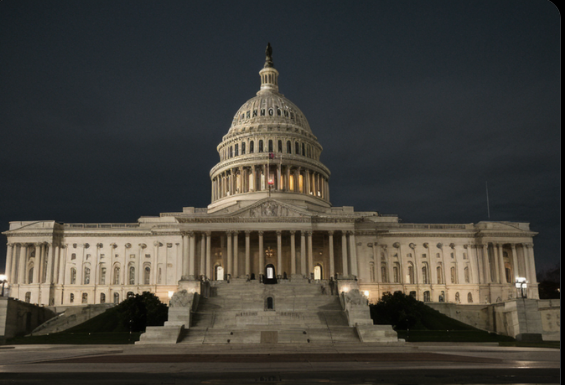US Government Shutdown: First Since 2018 Brings Uncertainty
The United States government officially shut down at midnight after Congress failed to pass a stopgap funding bill. The dramatic collapse of negotiations has triggered the nation’s first government shutdown in more than six years, sending shockwaves through Washington and raising fears of prolonged disruption.
The standoff stems from Democrats rejecting a Republican-backed funding package that did not address their demands, particularly regarding social safety programs and policy measures tied to future spending. With no resolution in sight, lawmakers left Capitol Hill late at night without a clear plan for the immediate path forward.
Essential Services Continue, But Many Workers Unpaid
While government operations are partially suspended, essential services remain functional. Military personnel, federal law enforcement, and emergency workers will continue to report for duty. However, they will do so without pay until funding is restored, a move that has sparked outrage and renewed debates over the treatment of essential workers during political impasses.
Non-essential federal employees face immediate furloughs. According to the Congressional Budget Office (CBO), as many as 750,000 workers could be temporarily sidelined, creating ripple effects in agencies ranging from education to environmental protection. These employees typically receive back pay once a shutdown ends, but the uncertainty of duration leaves households across the country bracing for financial strain.
Impact on Federal Services and Benefits
A shutdown halts or delays many everyday functions of government. Passport and visa processing will slow, national parks and museums face closures, and federally funded research projects could come to a standstill. Social safety net benefits like nutrition assistance programs may also face disruption if the shutdown extends for weeks.
Air traffic control, border security, and the postal service remain operational. However, the stress of working without pay has historically fueled lower morale and stretched resources thin. Federal contractors, unlike government employees, are less likely to receive retroactive compensation, raising additional concerns over economic fallout.
Political Stakes and Escalating Tensions
The president has escalated the situation by suggesting that his administration may permanently dismiss “a lot” of federal workers if the shutdown drags on. This unprecedented statement adds a new layer of tension, given that previous shutdowns traditionally ended with employees returning to their positions and receiving compensation.
For Republicans, the showdown represents a push to impose stricter spending controls and prioritize conservative policy goals. Democrats, meanwhile, argue that the proposed package ignores key funding for domestic priorities and social protections. Both sides remain entrenched, and the political cost of prolonged inaction may weigh heavily on lawmakers as the 2026 midterms approach.
Historical Context: The Last Shutdown
The last major government shutdown occurred from late December 2018 into January 2019, during Trump’s first term. That episode lasted 35 days, the longest in U.S. history, disrupting services across the country and leaving hundreds of thousands without pay through the holiday season. While many of those workers eventually received back pay, contractors and private partners bore lasting economic losses.
The fresh shutdown revives painful memories for families and businesses tied closely to federal operations. Economists warn that if the shutdown extends for weeks, it could slow growth and shake investor confidence in U.S. fiscal stability.
What Lies Ahead
As the shutdown takes hold, both parties face mounting pressure from the public and affected workers. Past shutdowns have often ended after bipartisan compromises, but the heightened rhetoric in Washington suggests a tough road ahead. The question remains whether cooler heads will prevail or if this standoff could last as long—or longer—than the 2018-2019 shutdown.
For now, millions of Americans must navigate daily uncertainty. From delayed benefits to closed services, the shutdown underscores the real-world impact of political gridlock. The coming weeks will test not only the resilience of federal workers but also the ability of U.S. leaders to bridge deepening divides.








